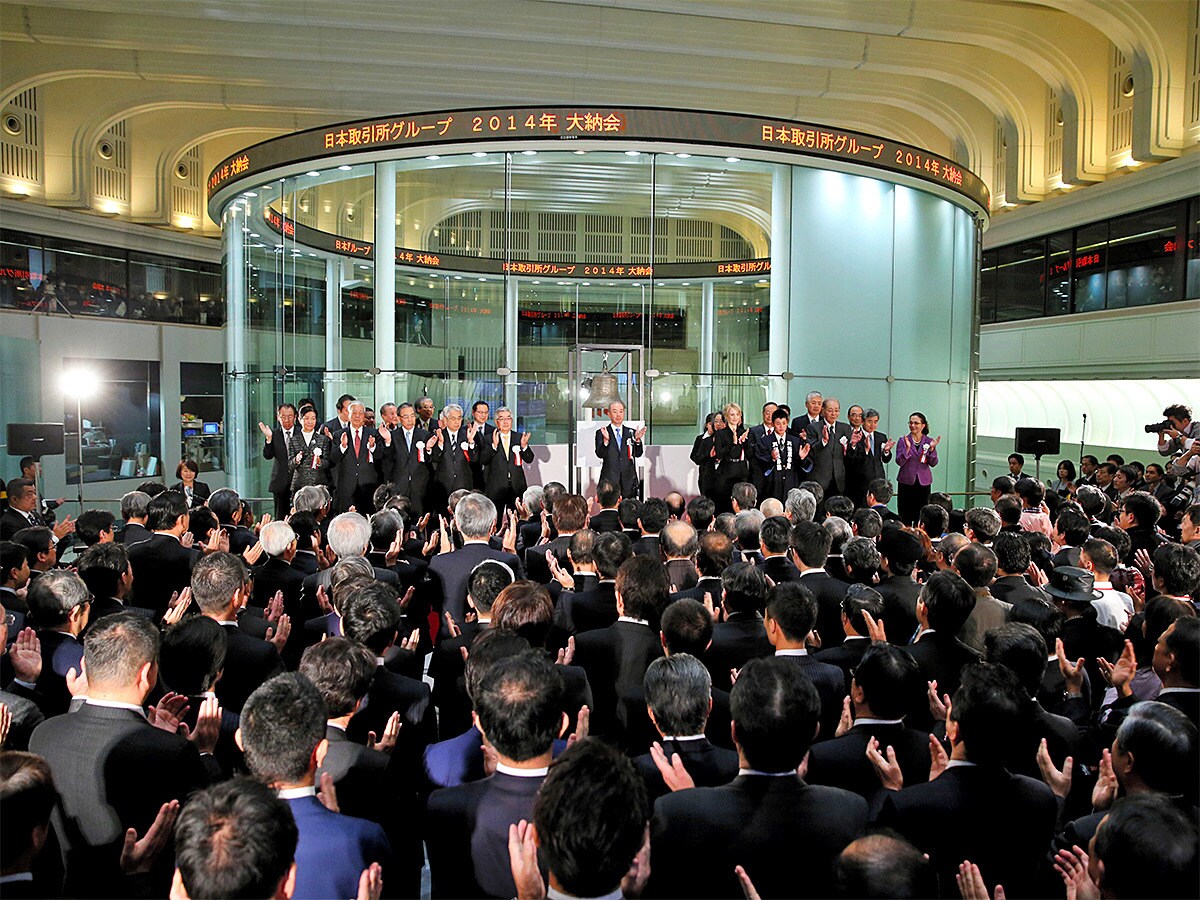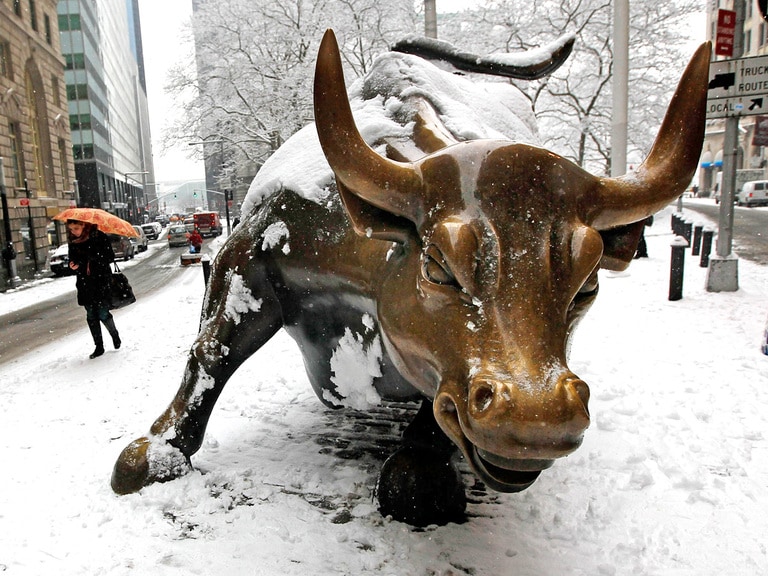The Nikkei 225 recently broke through a 30-year consolidation period after climbing to its highest point since 1991, the Financial Times reported. This position has validated many long-term bulls, while Warren Buffett recently increased his position in Japanese markets.
Despite the trials imposed by the coronavirus pandemic, the Nikkei 225 has risen 11.7% throughout 2020. Achieving the multi-year high of JPY26,706 will be seen as an indication that Japan is on the verge of recovering from the so-called “lost decades” of economic stagnation that followed the bursting of its asset bubble at the beginning of the 1990s. The Nikkei 225 tanked sharply from a peak of JPY38,957 in December 1989, falling to under JPY20,000 by October 1990 and, from early 1992 onwards, it remained below JPY23,000 for the next 25 years.
From October 2012 — when the Nikkei 225 hovered around the JPY9,000 mark in a prolonged slump following the global financial crisis of 2008 — the trendline has gained steadily. The index passed the JPY20,000 mark for the first time since 2000 in 2015 and, besides slumps accompanying global sell-offs in 2016 and 2018, the Nikkei 225 has experienced a period of sustained growth.
After opening 2020 at JPY23,319.76, the Nikkei continued to grow in the year’s early weeks to a high of JPY24,108.11, its highest level since October 2018. From February, the impact of the coronavirus pandemic on Asian markets pulled the index rapidly downwards, bottoming at JPY16,378.94 on 17 March. However, as the year has progressed the index has continued to climb, with the pace of growth increasing rapidly through November, resulting in the multi-year peak of JPY26,014.62 on 17 November. That benchmark is still a long way off the December 1989 peak of JPY38,957, however, which precipitated the downturn.
JPY38,957
Nikkei 225's December 1989 peak
Three arrows
It's no coincidence that the Nikkei 225’s upward trend began in 2012. In that year, Shinzo Abe reclaimed the post of Japan’s prime minister, and introduced the “three arrows” of economic policy commonly referred to as Abenomics: increasing monetary supply, expanding government spending (whilst limiting government debt), and structural reform.
The success of Abenomics has been mixed. While the Bank of Japan’s (BoJ) fiscal policies have arrested the country’s persistent deflation, they have not achieved the 2% inflation target the BoJ set itself. Similarly, while government spending has increased, government debt has grown to 230% of GDP at the end of 2019, the highest among sovereign states rated by Fitch — though this hasn’t significantly impacted the cost of government borrowing. Finally, promised structural reforms have been ineffective, with critics arguing that government support for small businesses is acting to stifle their performance over the long term.
Despite this mixed performance, Abe’s successor, Yoshihide Suga, indicated he would broadly continue with Abe’s economic policies when he took over as prime minister in September of this year. While the explicit objectives of Abenomics themselves have been hit with varying success, the Nikkei 225’s performance since 2012 suggests that their overall impact on the economy has been positive.
Old and new
So what, specifically, has driven the Nikkei 225’s recovery?
Prior to the coronavirus pandemic, tourism in Japan was making inroads. Between 2012 and 2019, the number of foreign visitors to Japan nearly quadrupled, from 8.36 million to 31.9 million and, before the pandemic hit, the government was aiming for this number to reach 40 million by 2020.
Hosting major international sporting events has been a key driver of this strategy. The 2019 Rugby World Cup, for example, is estimated to have boosted Japan’s economy by JPY216bn.
The Tokyo Olympics, the biggest prize of all in this regard, had to be postponed until 2021 due to the pandemic, meaning Japan is still awaiting much of the estimated JPY32trn windfall the games is predicted to bring. The income from tourism is distributed increasingly widely outside of the country’s urban centres, which is driving demand across the economy.
JPY32trillion
Tokyo Olympics' expected windfall for Japan
This year, however, a less traditional blend of companies has driven the Japanese economy forward as COVID-19 has shut down (or at least temporarily paused) the country’s booming tourist trade. Medical companies have performed well this year, with pharmaceutical manufacturer Daiichi Sankyo’s [4568] share price growing 65.6% to an all-time high of JPY3,866 on 27 November. Online medical services company M3 [2413] — the Nikkei’s youngest company — has surged 173.8% to JPY8,927 on 26 November, smashing its previous all-time high of JPY2,704 from December 2019 and, the March market crash aside, exploding as 2020 progressed.
The technological boom that powered the Nikkei’s expansion during the 1980s is also resurgent. Robotics manufacturer Fanuc [6954] has gained 26.83% in the year to date to 30 November, while electronics and gaming stocks have soared as audiences worldwide have been forced to stay at home, seeking digital diversions. Sony [6758] has gained 33% for the year to 26 November with the release of its PS5 generating a spike on 12 November and the success of Nintendo’s [7974] Switch console helping to drive a 34.1% increase in its share price YTD. SoftBank [9984], one of Japan’s largest companies, has gained 51.2% since the start of the year, largely down to the strong performance of its major investment, ecommerce platform Alibaba [BABA].
On target?
Despite the Nikkei’s resurgence, sentiment is mixed regarding its future prospects. While Margaret Yang of DailyFX feels that there is an immediate support level at JPY25,470, the market remains highly sensitive to any developments regarding the coronavirus pandemic, with the index falling on 19 November as Tokyo reported a record number of daily cases.
For the long term, the Nikkei’s ability to stay clear of the “lost decades” will depend on the effectiveness with which Japan has addressed the underlying causes of the period.
While Abe’s fiscal policy arrows have made progress towards (without necessarily hitting) their targets, his promised structural reform has missed the mark, Justin McCurry wrote in The Guardian. Despite encouraging greater female participation in the workforce and a slight loosening of immigration laws, serious issues with a declining, ageing population and weak corporate governance remain.
In its October World Economic Outlook report, the IMF forecasts the Japanese economy will shrink by 5.3% in 2020, before growing 2.3% in 2021 — both figures are behind the global estimates of -4.4% and 5.3%, respectively. Nevertheless, Dan Atkinson of capital.com predicts that the Nikkei 225’s current momentum will be sustained into next year.
Disclaimer Past performance is not a reliable indicator of future results.
CMC Markets is an execution-only service provider. The material (whether or not it states any opinions) is for general information purposes only, and does not take into account your personal circumstances or objectives. Nothing in this material is (or should be considered to be) financial, investment or other advice on which reliance should be placed. No opinion given in the material constitutes a recommendation by CMC Markets or the author that any particular investment, security, transaction or investment strategy is suitable for any specific person.
The material has not been prepared in accordance with legal requirements designed to promote the independence of investment research. Although we are not specifically prevented from dealing before providing this material, we do not seek to take advantage of the material prior to its dissemination.
CMC Markets does not endorse or offer opinion on the trading strategies used by the author. Their trading strategies do not guarantee any return and CMC Markets shall not be held responsible for any loss that you may incur, either directly or indirectly, arising from any investment based on any information contained herein.
*Tax treatment depends on individual circumstances and can change or may differ in a jurisdiction other than the UK.
Continue reading for FREE
- Includes free newsletter updates, unsubscribe anytime. Privacy policy





